- Rent, Lease, or Purchase
- |
May 16, 2021
Complete Guide to Stacking Shipping Containers
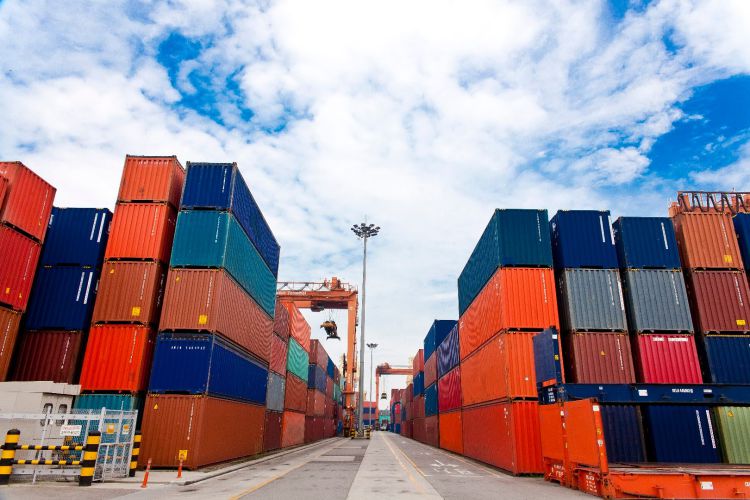
There is a real science of stacking shipping containers. A failure to distribute the weight properly can cause the units to become unstable and topple to the ground or into choppy waters.
In addition to stacking shipping containers holding goods, you can stack containers to build innovative structures such as offices, hotels, and residential spaces.
Both processes require specialized skill and know-how in safe container stacking.
Things to Consider When Stacking Containers
How to Stack Containers Safely?
If you own a container yard, you need a skilled crew that knows how to stack containers to avoid accidents and potentially heavy fines. OSHA has defined clear guidelines for operating with and stacking shipping containers.
How Much Weight Can You Stack on a Shipping Container?
A standard ISO container can withstand 192 metric tons of stacked weight on its corner posts, assuming dynamics that deliver a G force of 1.8. This means the bottom unit could support a stack of six fully loaded 40' containers and eight fully loaded 20' containers.
The weight may vary depending on the container size and the number of units in the container stack.
Note: Each container has a maximum stack load on the CSC plate or the documentation supplied.
Maximum Number of Containers You Can Stack
In general, you can stack up to nine containers on top of each other. Again, this depends on the amount of load the lowest container can take. One should gradually increase the height of the containers and avoid stacking too many at once. You also need to consider how wind loading and weight distribution inside each container impact stability.
Mistakes to Avoid
Before using a forklift to stack shipping containers, check for the following factors:
- Make sure the forks extend through the length of the container. Ensure that the unit remains safely in place when carried up or down the stack.
- Ensure the forks do not poke through the floor of the unit.
- Confirm that the forklift is capable of handling the weight of the shipping container.
Not checking these factors can cause accidents that can lead to loss of life or injury to workers and expensive OSHA penalties.
How to Stack Containers
Different methods are used to stack shipping containers on stable land versus stacking them on a ship deck that will sail over choppy waters.
Land
Inspect the Containers
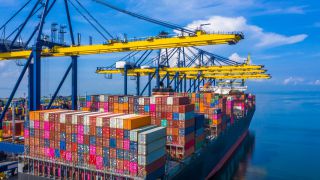
Always inspect the shipping containers for any visible signs of damage or cracks before stacking. Check everything from the sides, sub-flooring, and corners for structural damage. If you find any issues in structural quality, you either need to repair the container, remove it from the stack, or replace it.
On long ocean journeys, containers face harsh sea winds and saltwater that can cause rust. Therefore, it is best to check both the interiors and the outer body of the container for rust in all mechanisms and treat it before stacking. Structurally weak shipping containers can jeopardize the safety of the crew working at the shipping yard.
Align Corner Posts
Shipping containers are like giant legos. You should always stack one corner post over the other for maximum stability. The corner posts of the container above and the corner posts below should perfectly align to maintain structural stability.
If you are stacking shipping containers of different sizes, the larger unit should be on top. For example, you should always place a 40-foot container above two 20-foot containers and not the other way around because two smaller containers on top can increase the chances of collapsing.
Use Lashing Rods
Secure the containers using lashing rods and twist-locks to prevent them from sliding and causing an accident.
On a Ship
Choose the Right On-Board Stowage
A container ship can have two types of stowage - “fore and aft” and “athwartships.” Fore and aft stow the containers lengthwise, and athwartships stow horizontally at right angles to the ship's center. The method you use depends on the size of the ship and the weather.
Fore and aft provide more safety against rough winds, crashing waves, and choppy waters.
Securing Containers Properly
Traveling across the sea is more tedious than traveling by land. Therefore, it is important to use cell guides and vertical guide rails to secure the shipping containers and take the load off those located at the bottom of the stack. In addition, lashing rods and twist-locks can secure the containers and keep them from slipping.
Using the Right Shipping Container Lifting and Stacking Equipment
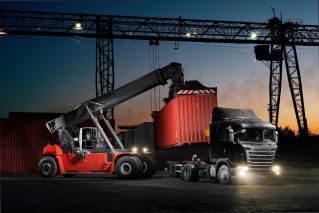
It is important to use the right lifting equipment for proper container stacking and the safety of your crew. Some shipping container lifting options are as follows:
- Gantry crane - Can lift containers off ships and stack them in high to medium-volume shipping yards. The cost of these cranes generally runs into millions of dollars.
- Straddle carrier - Similar to gantry cranes, but its massive size allows use only on reinforced concrete surfaces.
- Reach stacker - Helps achieve fast turnaround and stack 2-3 containers on-site and on the chassis of rail wagons and trucks.
- Top loader - A specially designed forklift that can pile containers in a single stack.
- Forklift - One of the most versatile and commonly used lifting and stacking machines at warehouses and yards. They are multi-purpose and cost-effective solutions.
- Side loader - Helps in quick transfer and stacking of containers. They are also called self-loading trailers, swing lifts, or side lifters.
- Truck crane - Mobile cranes on the back of trucks that can place containers anywhere within the arc of the crane arm. Due to structural limitations, they can lift only limited weights; however, they are ideal for sites with limited space.
- Tilt bed truck - Tilts the bed downwards and pushes the container off to the ground. They have limited lifting capacity and are ideal for moving empty containers or containers to store non-precious goods.
Conclusion
Stacking shipping containers isn't a job for amateurs. If your crew is unfamiliar with handling shipping containers and stringent safety norms, it's important to train them or find a material handling company to stack containers.
If you are operating a yard, hire only trained and experienced staff or a crane operator to handle the stacking and lifting equipment such as a container forklift. Take necessary precautions while stacking containers on a ship and factor in the type of weather conditions they will generally face at sea.
At Mobile Modular Portable Storage, our experts help businesses like yours understand important considerations in lifting and stacking shipping containers, weight loading, and choosing equipment like tilt bed trucks or forklifts.
Speak to our team at 866-459-7600. Our representatives will stay in touch with you and deliver timely information from inquiry to installation.
Frequently Asked Questions
Do you need a forklift certification to stack containers?
Container forklifts are critical and slow-moving equipment that operate at yards to move storage containers around. Even a tiny mistake in moving the shipping containers can cause major damage to human life and property. OSHA provides clear training guidelines and certification for using forklifts.
If OSHA observes that you aren't using trained personnel to move the containers, you could attract a heavy monetary penalty.
How high can you stack shipping containers?
Container stacking depends on the weight of the container and its contents. It also depends on the container structure, manufacturing quality, and strength. In general, you can stack up to nine containers on top of each other.
How much wind can a container withstand?
Rigidity tests prove that a shipping container structure can withstand wind speeds up to 180 mph without wavering. However, containers with modifications may be less resistant to high wind speeds, based on the types of modifications.
Do shipping containers lock together?
Yes, you can lock the containers together using twist-locks on the corner castings to form a standardized rotating connector.
Related Blogs
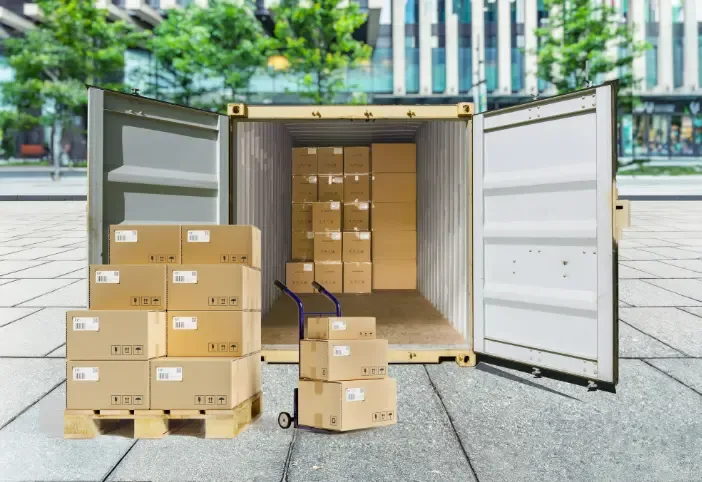
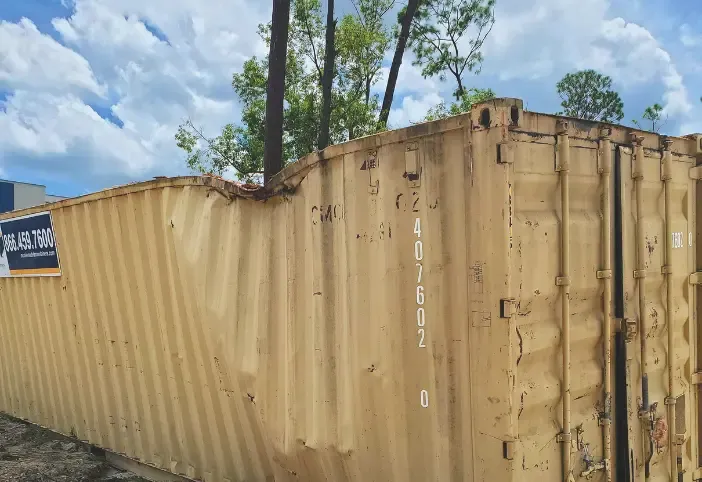
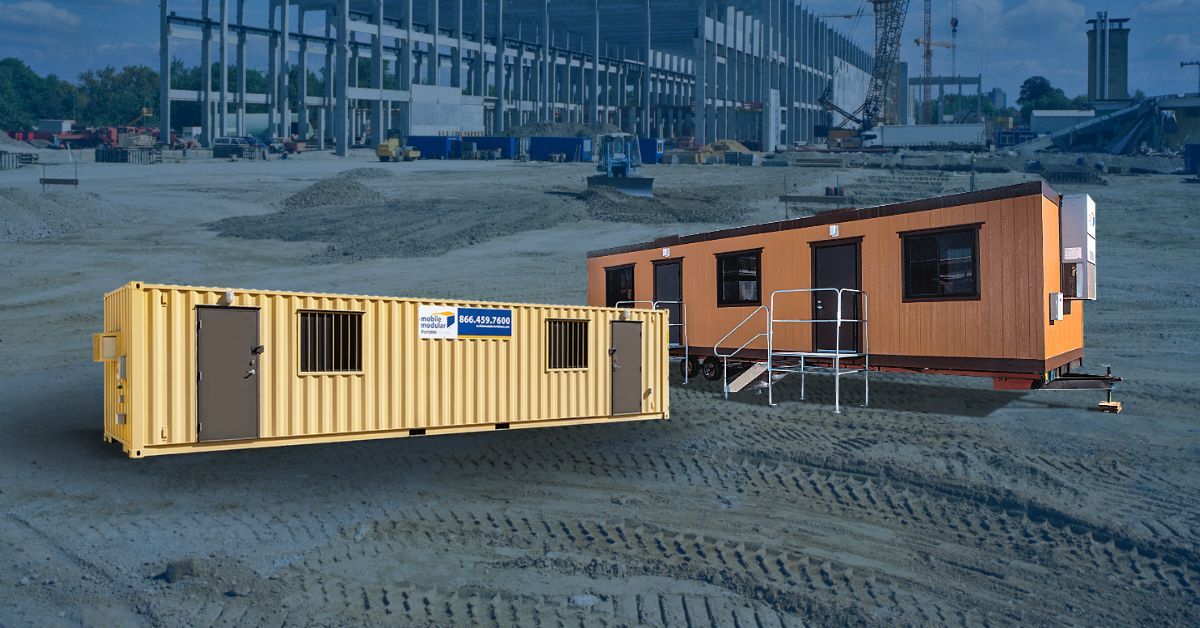
Subscribe to Our Blog
Enter your email address to subscribe to the blog and receive the notification of new posts by email.
Thank You for Subscribing to Our Blog!
Stay tuned for upcoming emails with valuable content that we hope will enhance your experience with our brand.
Both Pardot and mg360 form submissions failed.
